Joachim's Ko-Semeai - Putting the Cart
Before the Horse (2013 - 2015)
9a - External Ko on the Upper Edge
(with Larger Eye)
|
( (Referenced by Black's |
|
White's The liberty count on the right is still five liberties for White (w, m, 3 * c) against seven liberties for Black (3 * c, 3 * b, k), so Black needs one external ko-threat to win. Black's |
|
White could have even improved her position in the top left corner beforehand by choosing the sente combination of Black's protective move is at !!! The precondition concerning this protective move must be kept in mind! With positions in the upper left corner, where this protective move is not mandatory, one of White's stones on the right side must be taken off the board, resulting in one more liberty for Black's group in the upper right, favouring Black. !!! |
|
|
|
|
|
|
|
But please remember the precondition that Black must have been able to play the additional external ko-threat (at |
|
|
|
|
|
|
|
This is the same result as with Black's larger eye alone, thus the additional external ko-shape on the upper edge does not have an effect on the outcome here. |
|
!!! White could have pre-empted the death of her groups in the hanezeki, if she had inserted the gote-sente-combination of In this case, capturing only White's centre group is not enough for Black. White will win the game by the surprising sequence in the lower left corner, as will be shown next. |
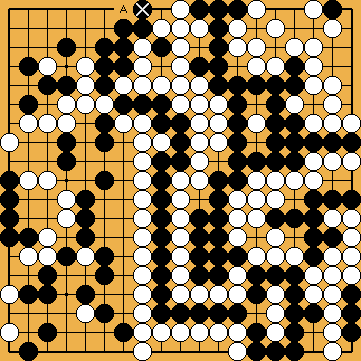
 988
988 352
352 -stone must be moved one point to the left, to
-stone must be moved one point to the left, to  , in order to enable a ko-shape in this area.
, in order to enable a ko-shape in this area.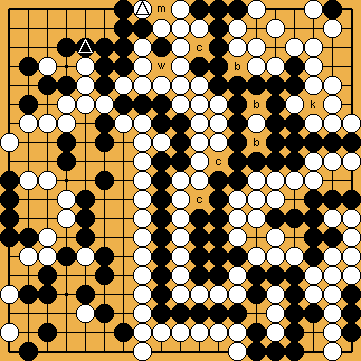
 -stone creates the external ko-shape on the upper edge. This additional stone is compensated for by the additional
-stone creates the external ko-shape on the upper edge. This additional stone is compensated for by the additional  -stone for Black. Without this stone, Black could not wholly approach White's centre group from the left.
-stone for Black. Without this stone, Black could not wholly approach White's centre group from the left.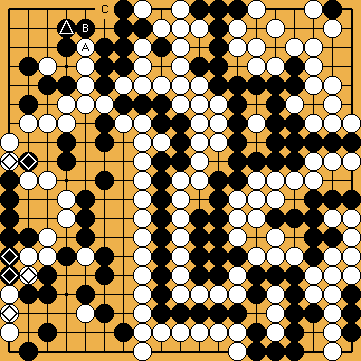
 ,
,  , to prepare the ground for forthcoming ko-threats there. Please note that White's upper string on the left side did not lose an additional liberty by this measure. We also added the beginning of the Nakade Sequence on the left side (
, to prepare the ground for forthcoming ko-threats there. Please note that White's upper string on the left side did not lose an additional liberty by this measure. We also added the beginning of the Nakade Sequence on the left side ( /
/  ).
). , instead, would enable an additional White ko-threat.
, instead, would enable an additional White ko-threat.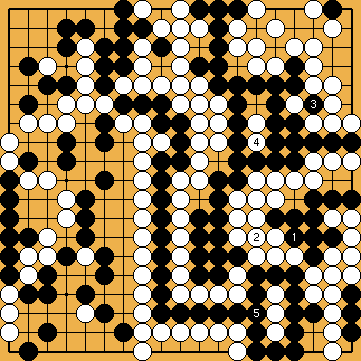
 :
: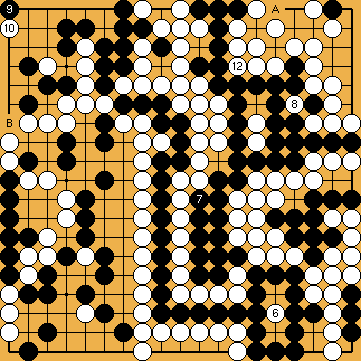

 :
: is not played already, so Black's atari at
is not played already, so Black's atari at 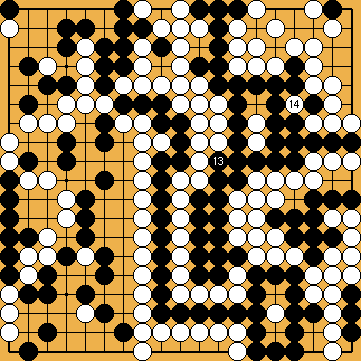
 :
: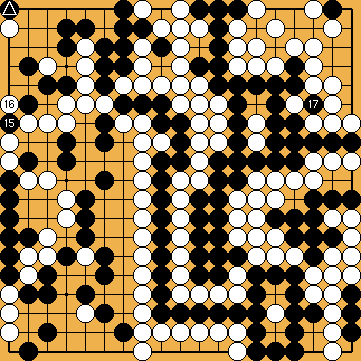
 :
: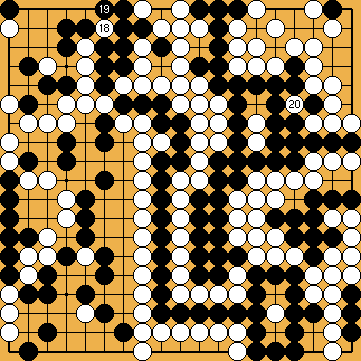
 :
: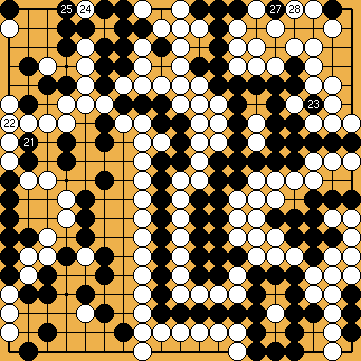
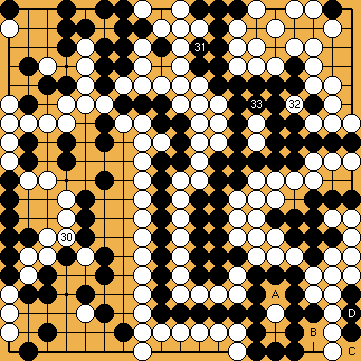
 ;
; 
 :
: , after having used the moves
, after having used the moves  , and
, and  , as ko-threats. However, this will not be enough to win the game, because her centre group will be taken off the board.
, as ko-threats. However, this will not be enough to win the game, because her centre group will be taken off the board.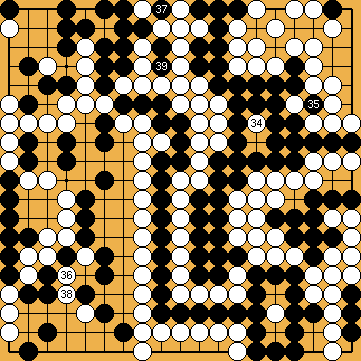
 :
: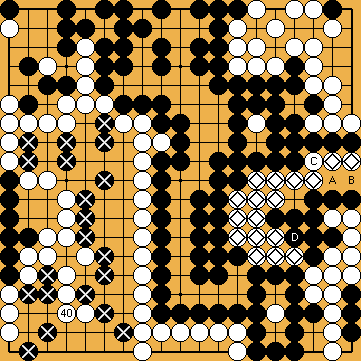
 :
: , used as a ko-threat, will become suicidal then. !!!
, used as a ko-threat, will become suicidal then. !!! 
